Complete Solutions to SCQ_TYPE of chapter RIGID BODY DYNAMICS 2 of Class 11 book with complete answers and questions
| Class 11 | PHYSICS |
| Chapter | RIGID BODY DYNAMICS 2 |
| CENGAGE PHYSICS | SCQ_TYPE |
| Number Of Questions | 29 |
| Academic Year | 2023-24 |
A thin circular ring of mass M and radius r is rotating about its axis with a constant angular velocity `omega`, Two objects, each of mass m, are attached gently to the opposite ends of a diameter of the ring. The wheel now rotates with an angular velocity.
View SolutionTwo point masses of 0.3 kg and 0.7kg are fixed at the ends of a rod of length 1.4 m and of negligible mass. The rod is set rotating about an axis perpendicular to its length with a uniform angular speed. The point on the rod through which the axis should pass in order that the work required for rotation of the rod is minimum, is located at a distance of
View SolutionA mass M moving with a constant velocity parlale to the X-axis. Its angular momentum with respect to the origin
View SolutionA smooth sphere A is moving on a frictionless horizontal plane with angular speed `omega` and centre of mass velocity `upsilon`. It collides elastically and head on with an identical sphere B at rest. Neglect friction everywhere. After the collision, their angular speeds are `omega_A and omega_B` respectively. Then
View SolutionA disc of mass M and radius R is rolling with angular speed `omega` on a horizontal plane as shown in figure. The magnitude of angular momentum of the disc about the origin O is
View SolutionA cubical block of side a is moving with velocity V on a horizontal smooth plane as shown in Figure. It hits a ridge at point O. The angular speed of the block after it hits O is
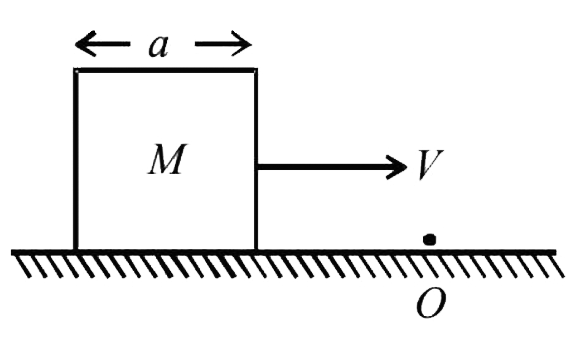
View SolutionA long horizontal rod has a bead which can slide along its length and initially placed at a
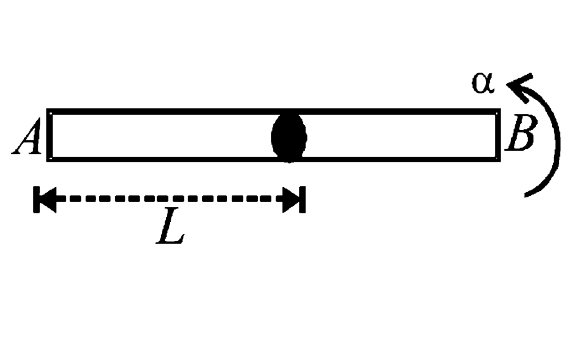
distance L from one end A of the rod. The rod is set in angular motion about A with constant angular acceleration `alpha.` if the coefficient of friction between the rod and the bead is `mu`, and gravity is neglected, then the time after which the bead starts slipping is
View SolutionA cubical block of side L rests on a rough horizonta surface with coefficient of friction `mu`. A horizontal force F is applied on the block as shown. If the coefficient of friction is sufficiently high so that the block does not slide before toppling, the minimum force required to topple the block is

View SolutionA thin wire of length `L` and uniform linear mass density `rho` is bent into a circular loop with centre at O as shown. The moment of inertia of the loop about the axis `XX'` is `A` cubical block of side `L` rests on a rough horizontal surface with coefficient of friction sufficiently high so that the block does not slide before toppling, the minimum force required to topple the block is
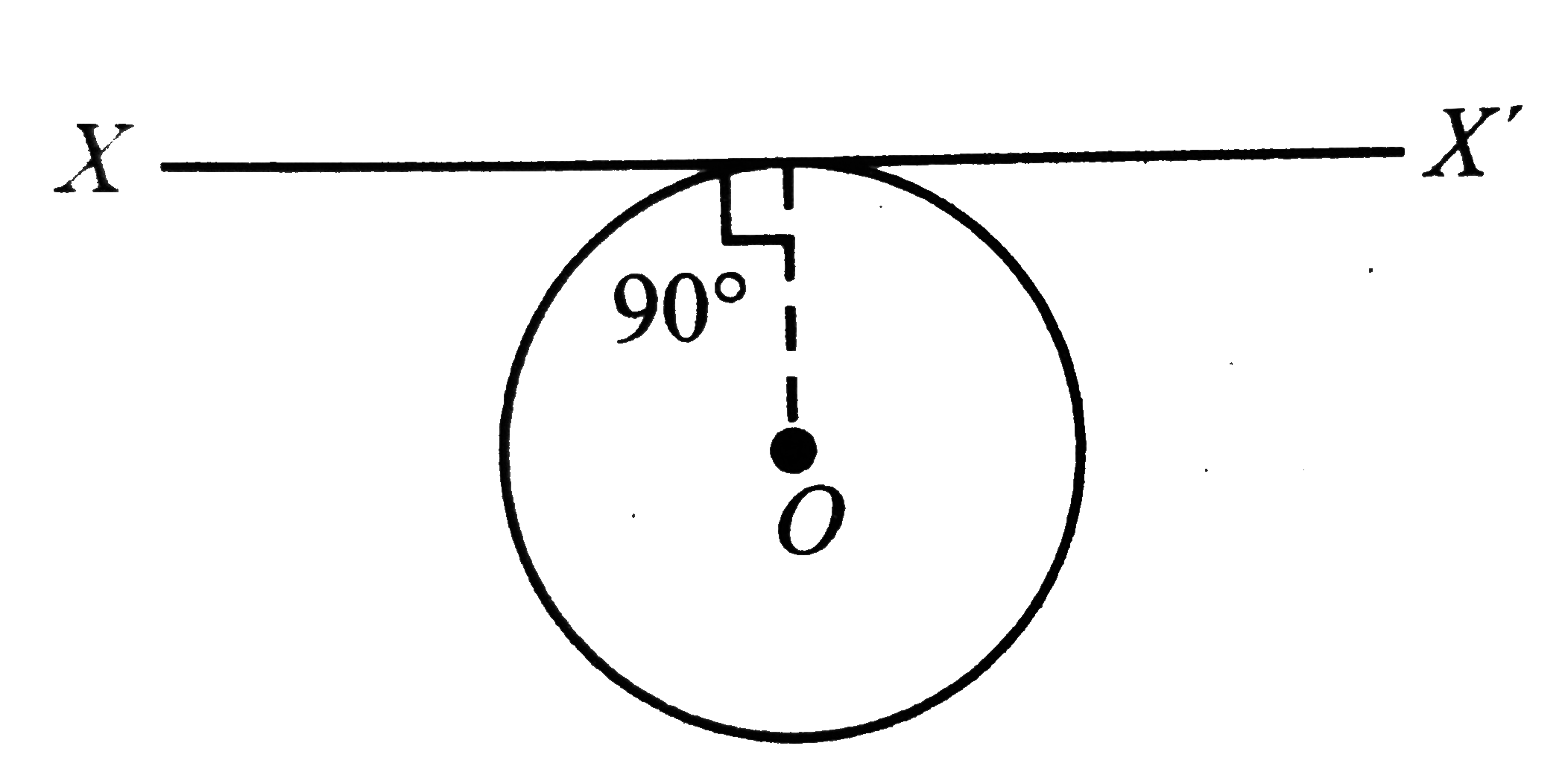
View SolutionA equilaterial triangle `ABC` formed from a uniform wire has two small identical beads initially located at `A`. The triangle is set rotating about the vertical axis `AO`. Then the beads are released from rest simultaneously and allowed to slide down. one long. `AB` and the other along `AC` as shown. Neglecting frictional effects, the quantities that are conserved as the beads slide down, are.
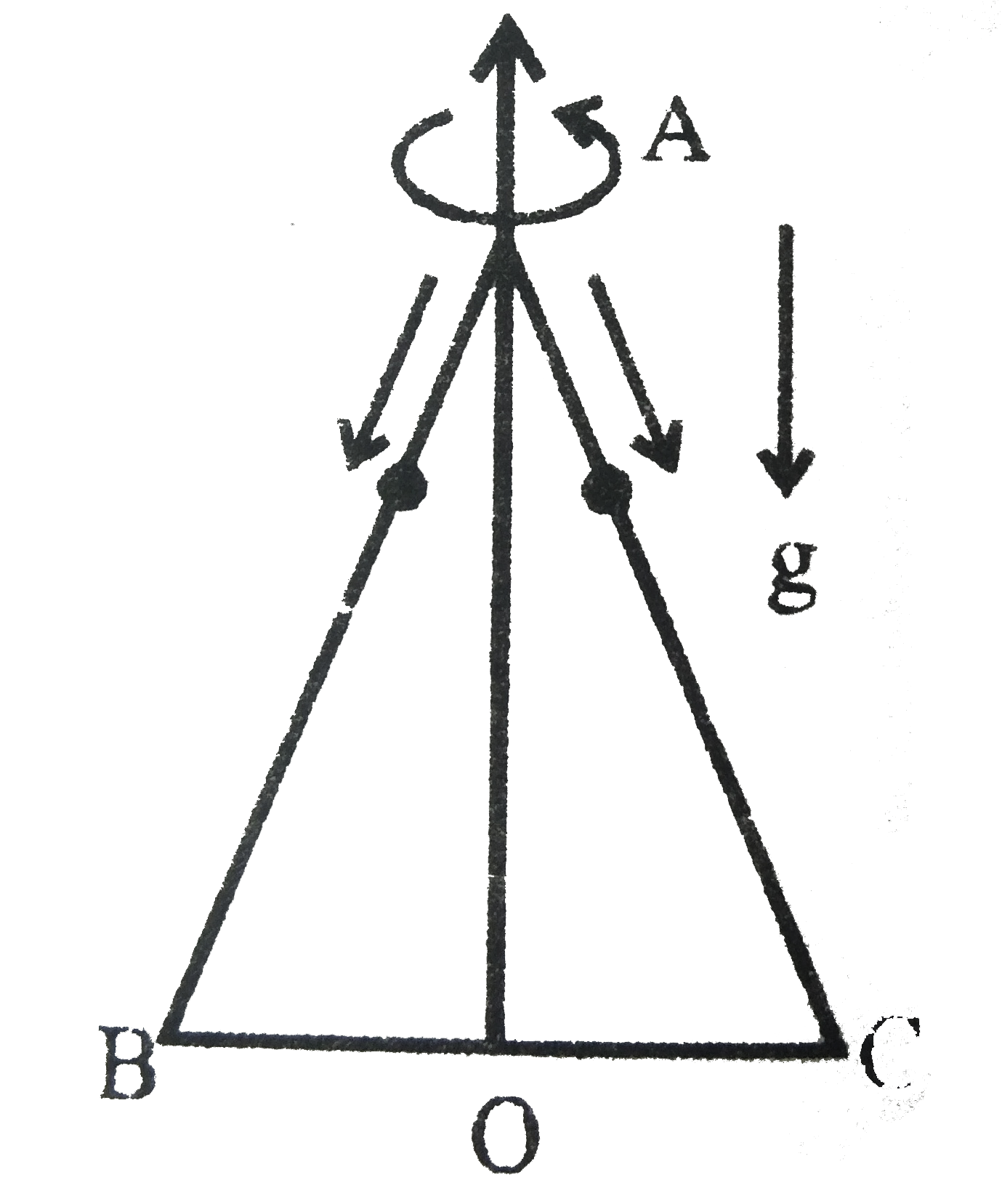 .
.
View SolutionOne quarter sector is cut from a uniform circular disc of radius `R`. This sector has mass `M`. It is made to rotate about a line perpendicular to its plane and passing through the centre of the original disc. It moment of inertia about the axis of rotation is.
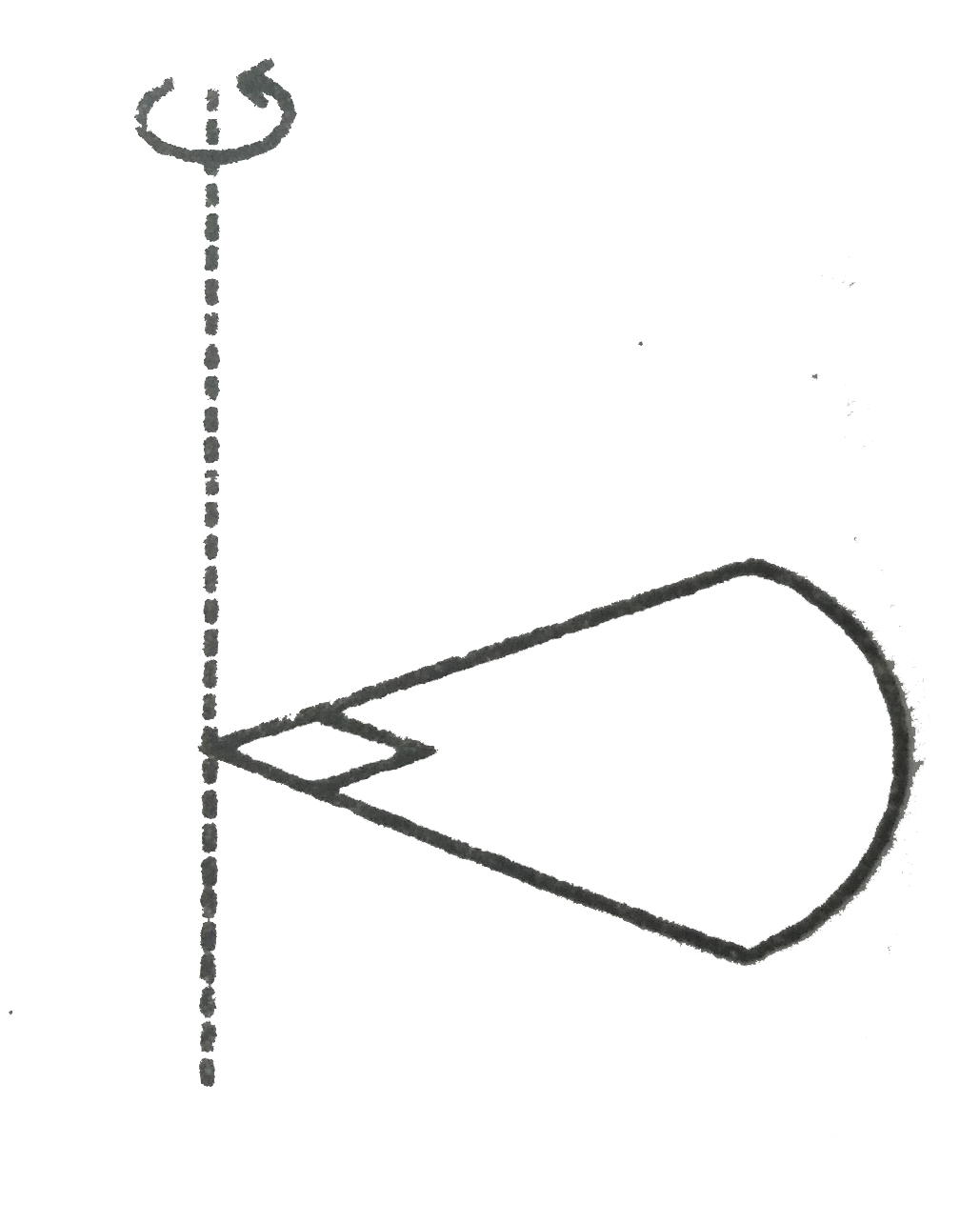 .
.
View SolutionA cylinder rolls up an inclined plane, reaches some height, and then rolls down (without slipping throughout these motions). The directions of the frictional force acting on the cylinder are.
View SolutionA circular platform is free to rotate in a horizontal plane about a vertical axis passing through its centre. A tortoise is sitting at the edge of the platform. Now the platform is given an angular velocity `omega_(0)`. When the tortoise move along a chord of the platform with a constant velocity (with respect to the platform),
View SolutionConsider a body, shown in figure, consisting of two identical balls, each of mass M connected by a light rigid rod. If an impulse J = MV is imparted to the body at one of its ends what would be it angular velocity?
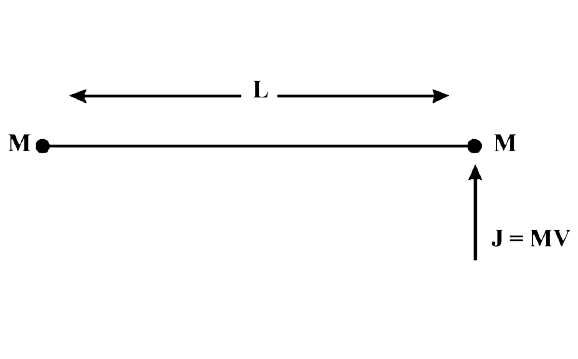
View SolutionA particle undergoes uniform circular motion. About which point on the plane of the circle, will the angular momentum of the particle remain conserved?
View SolutionA horizonral circular plate is rotating about a vertical axis passing through its centre with an angular velocity `omega_(0)`. A man sitting at the centre having two blocks in his hands stretches out his hands so that the moment of inertia of the system doubles. If the kinetic energy of the system is `K` intially, its final kinetic energy will be
View SolutionA disc is rolling (without slipping) on a horizontal surface. `C` is its center and `Q` and `P` are two points equidistant from `C`. Let `V_(P), V_(Q)` and `V_(C)` be the magnitude of velocities of points `P, Q` and `C` respectively, then
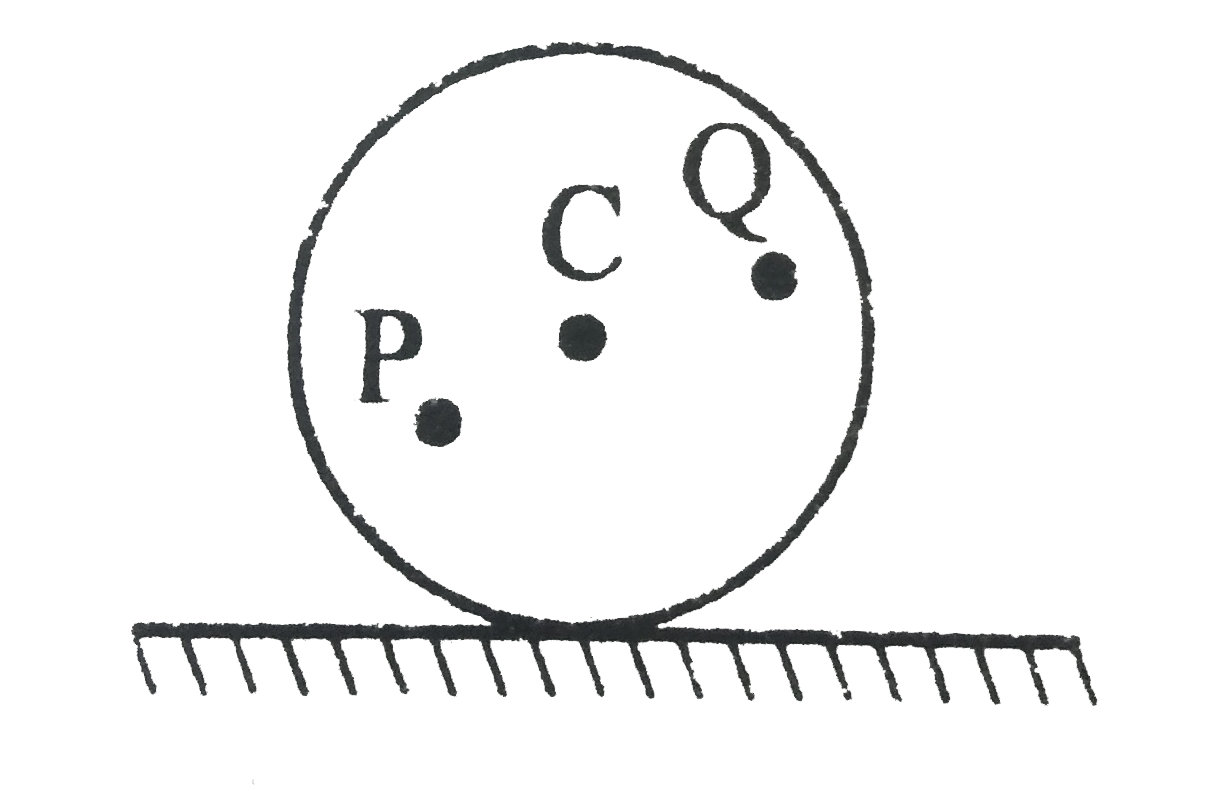 .
.
View SolutionA block of mass m is at rest under the action of force F against a wall as shown in figure. Which of the following statement is incorrect?
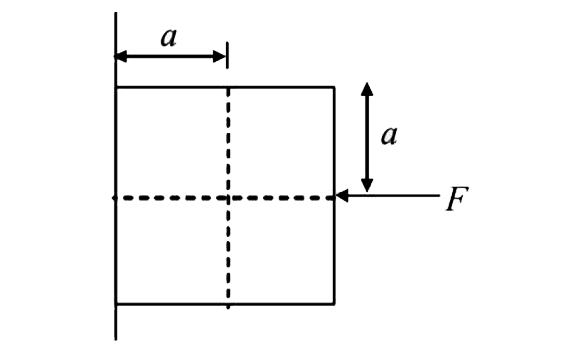
View SolutionFrom a circular disc of radius R and mass 9 M , a small disc of radius R/3 is removed from the disc. The moment of inertia of the remaining disc about an axis perpendicular to the plane of the disc and passing through O is
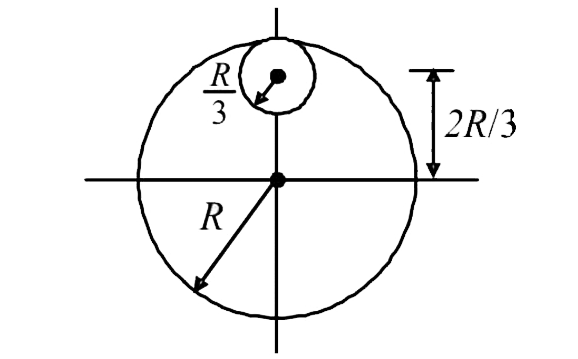
View SolutionA particle is confined to rotate in a circular path decreasing linear speed, then which of the following is correct?
View SolutionA solid sphere of mass `M`, radius `R` and having moment of inertia about as axis passing through the centre of mass as `I`, is recast into a disc of thickness `t`, whose moment of inertia about an axis passing through its edge and perpendicular to its plance remains `I`. Then, radius of the disc will be.
View SolutionA small object of uniform density rolls up a curved surface with an initial velocity `v`. It reached upto maximum height of `3v^(2)//4g` with respect to the initial position. The object is -
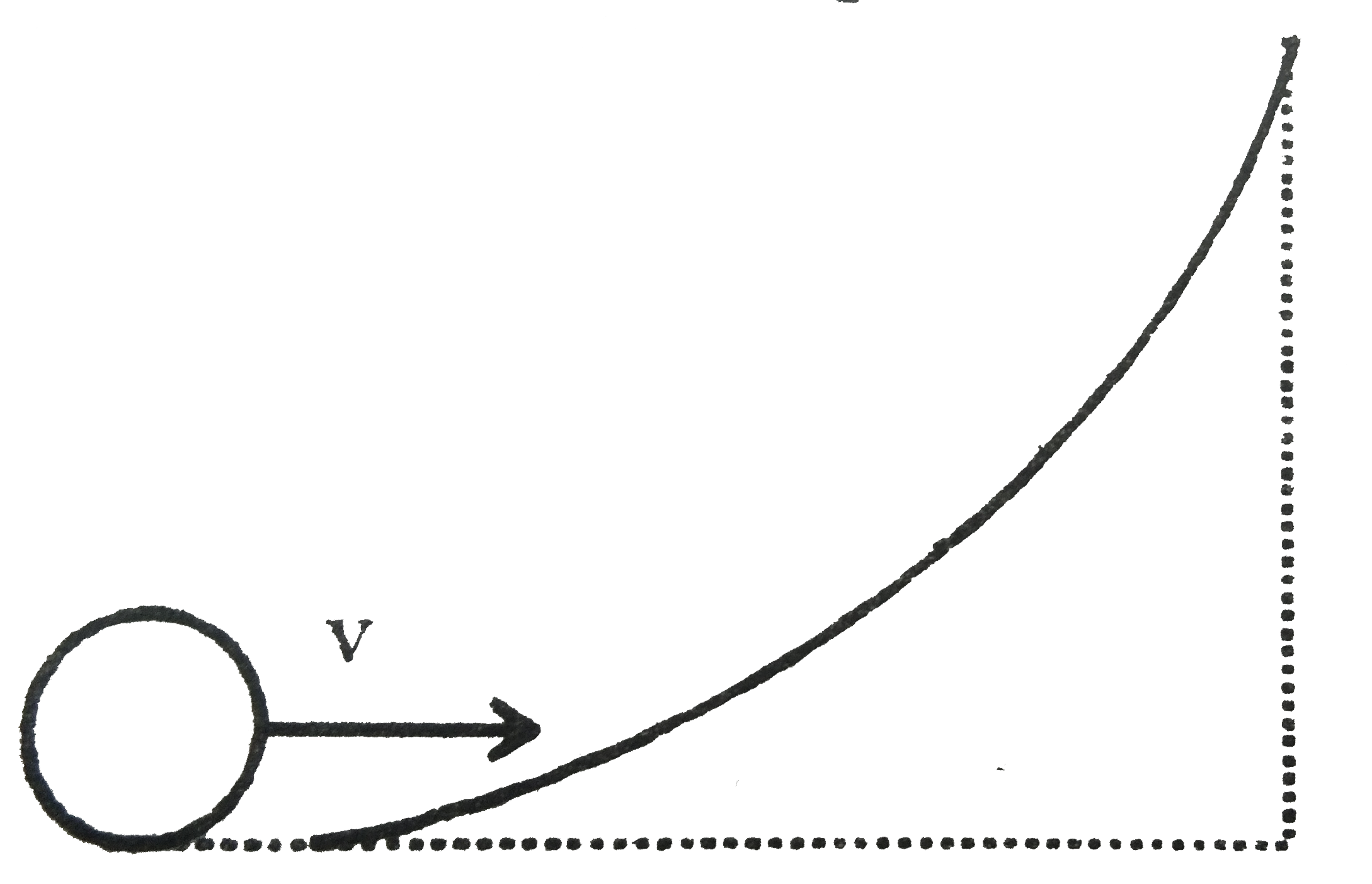 .
.
View SolutionIf the resultant of all the external forces acting on a system of particles is zero. Then from an inertial frame, one can surely say that
View SolutionA block of base `10cmxx10cm` and height 15cm is kept on an inclined plane. The coefficient of friction between them is `sqrt3`. The inclination `theta` of this inclined plane from the horizontal plane is gradually increased from `0^@` Then
View SolutionA thin ring of mass 2kg and radius 0.5 m is rolling without on a horizontal plane with velocity 1m/s. A small ball of mass 0.1kg, moving with velocity 20 m/s in the opposite direction hits the ring at a height of 0.75m and goes vertically up with velocity 10m/s. Immediately after the collision

View SolutionA thin uniform rod, pivoted at O, is rotating in the horizontal plane with constatn angular speed `omega`, as shown in the figure. At time t = 0, a small insect starts from O and moves with constant sped v, with respect to the rod towards the other end. It reaches the end of the rod at t =T and stops. The angular speed of the system remains `omega` throughout. The magnitude of the torque `(|vecpi|)` about O, as a function of time is best represented by which plot?
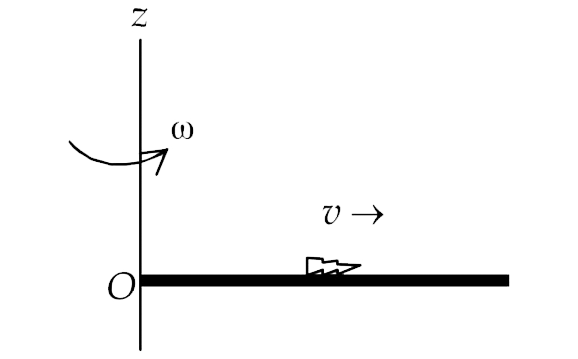
View SolutionA small mass m is attached to a massless string whose other end is fixed at P as shown in the figure. The mass is undergoing circular motion in the x-y plane with centre at O and constant angular speed `omega`. If the angular momentum of the system. calculated about O and P are denoted. by `vecL_O and vecL_P` respectively, then.
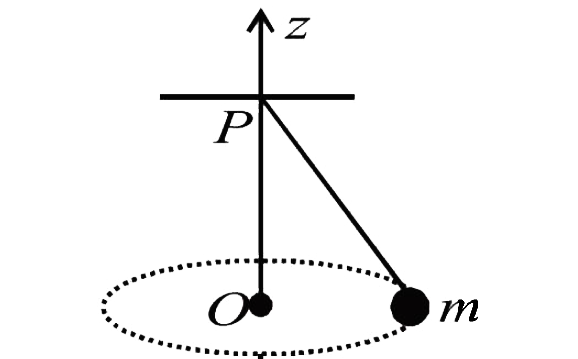
View SolutionTwo identical discs of same radius `R` are rotating about their axes in opposite directions with the same constant angular speed `omega` . The discs are in the same horizontal plane. At time `t = 0` , the points `P` and `Q` are facing each other as shown in the figure. The relative speed between the two points `P` and `Q` is `v_(r)`. In one time period `(T) ` of rotation of the discs , `v_(r)` as a function of time is best represented by
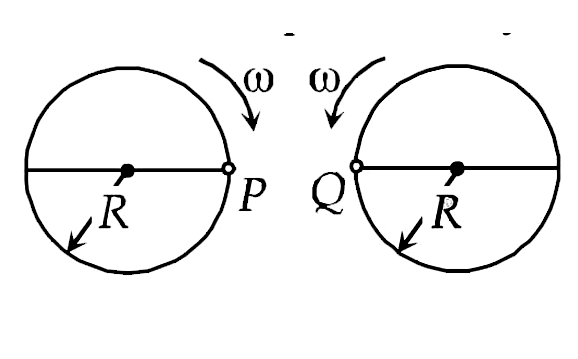
View SolutionTwo solid cylinders P and Q of same mass and same radius start rolling down a fixed inclined plane from the same height at the same time. Cylinder P has most of its mass concentrated near its surface, while Q has most its mass concentrated near the axis. Which statement(s) is (are) correct?
View Solution
SCQ_TYPE questions and complete solutions for chapter RIGID BODY DYNAMICS 2 of CENGAGE PHYSICS (HINGLISH) of Class 11